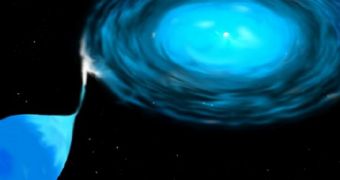According to the conclusions of a new investigation by researchers at the Swinburne University of Technology (SUT) in Melbourne, Australia, the strength of gravity has remained unchanged over the past 9 billion years. The Universe itself is around 13.75 billion years old, so this study suggests that gravity has remained steady throughout much of its history.
This conclusion is based on data covering all known supernova explosions that have occurred throughout history. All of these observations have been combined in a single dataset, which was in turn used to assess how gravitational pulls might have varied with changing circumstances over the ages. Apparently, in 9 billion years, no significant changes occurred.
This period begins around 1 billion years after our galaxy, the Milky Way, started forming and spans a time nearly twice as long as the time the Sun has been alive. The work focused on G, the gravitational constant proposed by Isaac Newton centuries ago. This value describes how two objects attract each other, based on their masses and the distances between them.
Some physicists have proposed that the value of G is not a constant in the strictest sense of the word, suggesting that its value has been changing slightly ever since the Big Bang rapidly expanded the Universe into being. The fact that no discernible evidence of this can be found over the past 9 billion years pretty much disproves these assumptions altogether.
“Looking back in cosmic time to find out how the laws of physics may have changed is not new. But supernova cosmology now allows us to do this with gravity,” explains SUT Professor Jeremy Mould, quoted by Space Daily.
One of the implications of a changing G constant would have been the development of variations in the average distance between Earth and the Sun. In the past, the two objects should have been spaced farther apart, but evidences related to our planet's past climate do not support such a hypothesis.
For this investigation, scientists have used observations of 580 supernova explosions that have occurred in the night sky in recorded history. The light released by these events was analyzed for signs of any potential changes in G's values. The team was unable to find any indications of such variations.
“Our cosmological analysis complements experimental efforts to describe and constrain the laws of physics in a new way and over cosmic time,” explains PhD student Syed Uddin, who is based at the Swinburne Center for Astrophysics and Supercomputing, and at the ARC Center of Excellence for All-sky Astrophysics (CAASTRO).
The reason supernova blasts were used for this research is that the critical mass they need to acquire before exploding is entirely dependent on Newton's gravitational constant. This “allows us to monitor it over billions of years of cosmic time – instead of only decades, as was the case in previous studies,” Professor Mould concludes.

 14 DAY TRIAL //
14 DAY TRIAL //